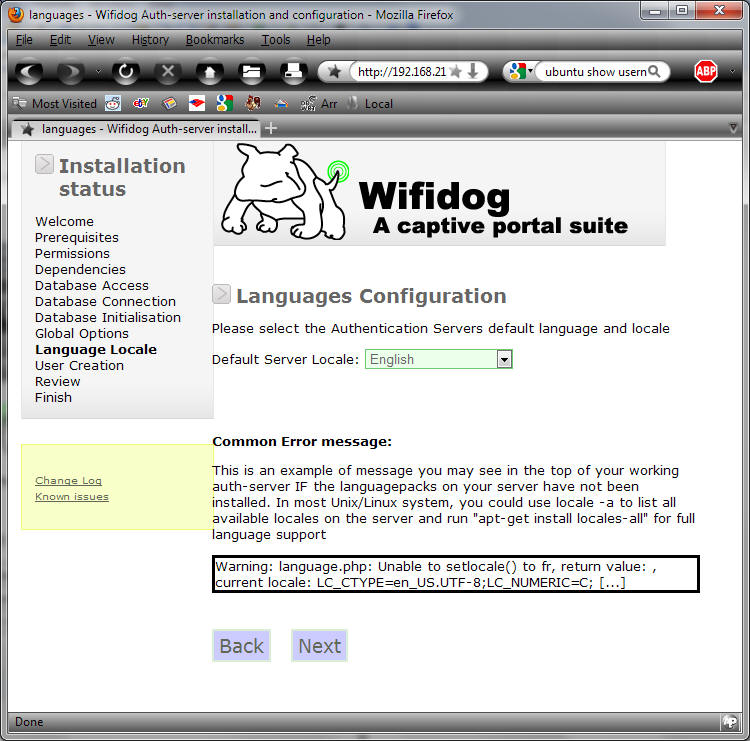Install Wifidog On Windows
# # $Id$ # # The latest version of this document lives at: # # # Please check the above URL if you have a FAQ that does not appear here. # WiFiDog/FAQ The WiFi Dog Captive Portal Frequently Asked Questions To alleviate the repetition on the [9][WWW] WiFiDog mailing list, and to help people get started quickly, here are the FAQs: 1. [10]The WiFi Dog Captive Portal Frequently Asked Questions 1. [11]General questions 1.
[12]What is WiFiDog? [13]Who makes WiFiDog? [14]Who can use WiFiDog?
During the install process (Install.php), you are asked for an admin login and password for Wifidog. If your unsure, or cant remember, just run the install.php again and you can reset it. Once thats done, you should be able to login. Install Wifidog On Windows Rating: 6,4/10 4400reviews. OpenWrt is an open source project for embedded operating system based on Linux, primarily used on.
[15]Who currently uses WiFiDog? [16]What can it do? Fake drivers license template south africa. [17]What is it composed of?
[18]What are the main differences between it and NoCat? [19]How does it work? [20]What does it run on? [21]Can I write my own client? [22]Can I write my own auth server? [23]What does it look like? [24]The WiFiDog Client 1.
[25]What do I need? [26]Pre-installation 3. [27]Installation 4. [28]Configuration 5. [29]Running 6. [30]Testing 3. [31]The WiFiDog client on a linksys WRT54G 1.
[32]What do I need? [33]Pre-installation 3. [34]Installation 1. [35]Introduction 2.
[36]Compiling a MIPS-friendly WiFiDog 3. [37]Getting the new MIPS-friendly WiFiDog onto the router 4. [38]Actual installation 4. [39]Configuration, Running and Testing 5. [40]The intricate link between WiFiDog and OpenWRT 6. [41]I am not comfortable with linux and don't know how to do all this compiling stuff.
Is there an easier way for me to get the WiFiDog client running on a Linksys WRT54G? [42]The WiFiDog auth server 1. [43]What do I need? [44]Installation 3. [45]Configuration 4. [46]Testing General questions What is WiFiDog?
[47]WiFiDog is software used to create wireless hotspots. It is a next-generation alternative to [48][WWW] NoCat.

Who makes WiFiDog? The technical team of [49]IleSansFil created and maintains [50]WiFiDog. Who can use WiFiDog? On the legal/licensing front, anyone can use [51]WiFiDog. It is free software released under the GPL license. On the practical front, we would like the answer to also be 'everyone', however this would not be the truth. The main target user base of [52]WiFiDog is network administrators, hotspot administrators and hackers who 'know what they're doing'.
Odds are that an average windows user would not benefit from, or be able to correctly setup and continually administer a [53]WiFiDog installation. If the software ever reaches a point of complete point-and-click ease that we feel average users can safely administer, we will update this document. Who currently uses WiFiDog? The following companies, organizations, groups or persons are known to use [54]WiFiDog on their hotspots: * [55]IleSansFil * [56][WWW] BC Wireless What can it do? See the [57]WiFiDog/FeatureList page for the feature list. What is it composed of?
It is composed of 2 components: 1. The client is a daemon process - this gets installed on every wireless router 2. The auth server is a web application - this gets installed in a central location What are the main differences between it and NoCat? On the client side, it's smaller, has far fewer dependencies, and runs well on embedded devices. On the auth server side, it's more customizable, and is geared towards capitalizing the infrastructure for the purposes of building portals and communities. How does it work?
The client daemon uses firewall rules to control traffic going through the router. When a new user tries to access a web site, the client will transparently re-direct them to the auth server where they can either log-in or sign-up. The client and the auth server then negotiate what to do with the client and either allow or deny them certain network access.
The client also talks to the auth server every X minutes to update it on vital statistics including uptime, load, traffic count per client, and to let it know it's still there. Refer to the [58]WiFiDog/FlowDiagram document for some more details. What does it run on?